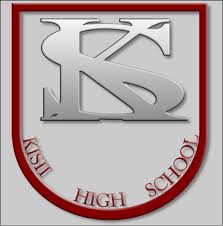HISTORY AND TRADITIONS

Kisii High School is a public national boy’s school, which is a nonprofit public institution established in 1934 to provide quality secondary education to young pupils. The mandate of the school is to implement the government’s educational programmes with the view of developing their potential in national leadership.
Immediately after the Colonial Government become interested in education, following the Phelps-Stokes Commission report of 1925, Kisii School started in 1934 as Government African School (GAS). The local Native Council of South Kavirondo raised the funds.
The following are the school’s major highlights:
1934 - Started Artisan courses at Primary School (Std. equivalent to STD 4-6). But when, it was unable to get pupils, the school admitted pupils in the substandard level (equivalent of standard 2 and 3) with 15 pupils.
1938 - Presented the first candidates for Primary School Examinations. By now, the school had 60 pupils in 2 streams of 30 each. The students had to be 50% Kisii and 50% Luo (Kisii 30 Pupils, Luo 30 pupils)
1945 - The Secondary School section was started. At that time, this was called the Junior Secondary- equivalent to standard 7 and 8. The population was still 60 per class.
1946 - Presented the first student for Kenya African Preliminary Examination.
1949 - Started the senior secondary (from 3 and 4) These candidates were to be prepared for KASSE (Kenya African Secondary School Examination).
1950 - Presented candidates for KASSE (Kenya African Secondary School Examination).
1953 -The school admitted candidates for a P3 teacher training course which lasted 3 years. It was later shifted to Kabianga Teachers College (present day Kabianga Boys) before later on moving to present day Kericho Teachers Training College.
1956 - The school entered its first candidates for Cambridge School Certificate. A total of 60 students were registered.
1962- The school was among the 6 schools to introduce ‘A’ LEVEL (Art) with a single stream of 30 students.
1963 - Presented its first Higher School Certificate candidates commonly referred to as ‘A’ Level Examination.
1967 - The ‘A’ level science class or science stream was started. By now, the student population was 450 (form 1 to 6).
2012- The school was elevated to National status
The school has grown in size from 3 streams at the start of 8-4-4 to the current 7 streams with a population of 1585 students.
Currently, the school has 65 TSC teachers, 13 BOM teachers and 96 non-teaching staff.
The school has had 18 principals since its inception. The current principal is Mr. Caspar Maina Momanyi.
The school offers abroad based curriculum with 24 subjects, 22 examinable subjects and 2 non-examinable subjects.
The school is very active in co-curricular activities like science and engineering fair, rugby, handball, basketball, football, hockey, badminton, table tennis, music, drama, athletics among others.
In 1997, the school emerged as the national champion in soccer.
